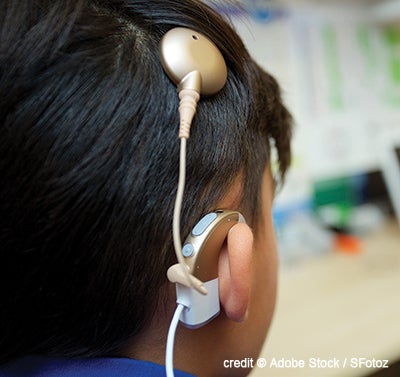 TRIO Best Practice articles are brief, structured reviews designed to provide the busy clinician with a handy outline and reference for day-to-day clinical decision making. The ENTtoday summaries below include the Background and Best Practice sections of the original article. To view the complete Laryngoscope articles free of charge, visit Laryngoscope.com.
TRIO Best Practice articles are brief, structured reviews designed to provide the busy clinician with a handy outline and reference for day-to-day clinical decision making. The ENTtoday summaries below include the Background and Best Practice sections of the original article. To view the complete Laryngoscope articles free of charge, visit Laryngoscope.com.
BACKGROUND
A critical consideration in cochlear implant (CI) design is the electrode array length, which impacts insertion depth and area of spiral ganglia stimulation. Lateral wall electrodes, in particular, have greater variability in length when compared with perimodiolar designs. Lateral wall arrays are broadly characterized as short (≤20 mm), medium (20 to 27 mm), or long (≥28 mm), with some variation in definitions between authors. Recent studies have suggested a correlation between the lengths of lateral wall electrode arrays and hearing outcomes; however, this nascent topic is limited by a lack of rigorous, prospective experiments with head-to-head comparisons between groups (Ear Hear. 2020;41:1349-1361).
Today, CI surgeons are faced with the increasingly difficult task of choosing the “right” device despite a growing number of choices and conflicting evidence regarding the relative importance of various anatomic, surgical, and device-specific factors.”
 Today, CI surgeons are faced with the increasingly difficult task of choosing the “right” device despite a growing number of choices and conflicting evidence regarding the relative importance of various anatomic, surgical, and device-specific factors. The purpose of this best practice review was to interpret the evolving literature and determine if lateral wall electrode array length affects audiometric outcomes following cochlear implantation.
Today, CI surgeons are faced with the increasingly difficult task of choosing the “right” device despite a growing number of choices and conflicting evidence regarding the relative importance of various anatomic, surgical, and device-specific factors. The purpose of this best practice review was to interpret the evolving literature and determine if lateral wall electrode array length affects audiometric outcomes following cochlear implantation.
BEST PRACTICE
For lateral wall electrodes, longer arrays are generally associated with superior speech perception outcomes. These suggestions may not apply for perimodiolar electrodes, with which greater cochlear coverage is achieved at shorter lengths. There is also a limit toward the apex where longer arrays, regardless of whether they are lateral wall or perimodiolar, are unable to achieve further spatial resolution with current technology. Recommendations in the setting of hearing preservation with residual low-frequency hearing are nuanced and should be determined on a case-by-case basis. Future array selection may become increasingly personalized based on individual cochlear anatomy.